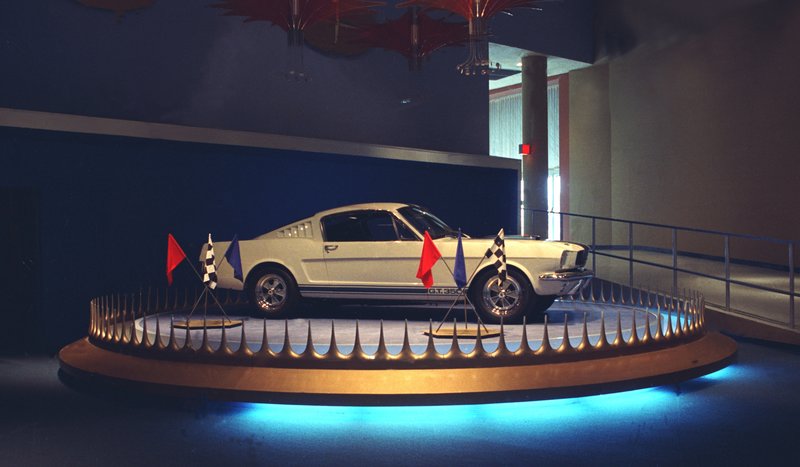There is no denying that the 1956 Ford Mustang is a classic auto that is also highly sought after by collectors. This is actually the first generation of the iconic muscle car, making it especially important in the history of sports cars. Ford manufactured this first generation between March 1964 and 1973, and the Mustang was what introduced the pony car to the world.

source: ShutterStock
Styling
The 1965 Ford Mustang stood out from other models to such a degree that it created the category of the pony car. It would not remain alone for long, however, as the Mustang’s success inspired others to follow suit. Even so, you can rest assured that it was the Mustang’s short deck and long hood that began the trend. When the very first Mustang went on sale in March 1964, it was just a hardtop or convertible, with the fastback joining the lineup in August. Despite its definitely new styling, the Mustang shared its underpinnings with the Ford Falcon and was a compact car just like that other vehicle. Most revisions throughout the first generation increased the engine power as well as the overall dimensions of the Mustang.

1965 Ford Mustang GT350 in the Ford Pavilion at the 1964 World’s Fair in New York.
The head of the Mustang project was Donald N. Frey, the chief engineer and assistant general manager of Lee Iacocca. He managed to supervise the Mustang’s full development in just 18 months. The inspiration came from the Ford Mustang I concept with its middle engine. When designing the Mustang, there were several key goals, including four bucket seats; a floor-mounted shifter; being under 180 inches long and 2,500 pounds; and having plenty of options for luxury, comfort, and power.
Practically the First Mustang

Mustang was positioned three different ways at launch, as a practical car for young families, a European-style sports car and a glamorous touring car. This ad is focused on the more luxurious touring car aspect and highlights the Tiffany Award for American Design Excellence that was presented to Ford following the launch.
Despite the fact that the Ford Mustang arrived in 1964, it only had “half” a model year before the 1965 version, the 1964 ½. They did, however, get 1965 VINs during production. This makes it somewhat challenging to tell the 1965 and 1964 ½ models apart, giving the 1965 status as almost the first Mustang. You may hear the 1965 Mustangs called “late 65s” to help differentiate between the two.
Engines and Standard Features
The 1965 Mustang used a 170-cubic-inch straight-six engine that came from the Falcon, plus its 3-speed manual transmission. All Mustangs for the year came standard with a padded dashboard, black front seat belts, and a glove box light. There were also V8 models with a front fender that showed off the displacement of the engine (either 260 or 285).

The first-generation Mustang was a worldwide sensation. An original design America couldn’t get enough of, it established the classic long nose, tight cabin, abrupt trunk proportion stance, which has become Mustang’s signature look.
For the “regular” 1965 models, Ford changed the engine lineup. It now included a 3.3-liter T-Code engine with 120 horsepower and a 200-horsepower C-Code 4.7-liter base V8. There was also a 225-horsepower A-Code and a 271-horsepower “Hi-Po” K-Code. Additional standard features were the adjustable bucket seats and AM radio plus more options for interior colors. Yet another engine choice came via the GT Equipment Package with its 225-horsepower V8 engine. This variation also came with rocker panel stripes, disc brakes, and grille-mounted fog lamps. The interior had a unique instrument panel. Other available options on the 1965 Ford Mustang included a floor console, a remote-operated mirror, sun visors, and a bench seat.
